|
|
|
|
|
-: Republic day
:-
|
|
The Republic day is celebrated on the 26 January all over the country. The India became republic on 26th January 1950 and from this day this festival is celebrated as a national festival. The day is celebrated traditionally with hoisting of the national flag, a parade and official festivities. The main attraction takes place at New Delhi, where a spectacular parade consisting of the Armed Forces, school children
and youth, and folk dancers move down from the magnificent Rashtrapati Bhavan, past the India Gate and onto the historic
Red Fort.
|
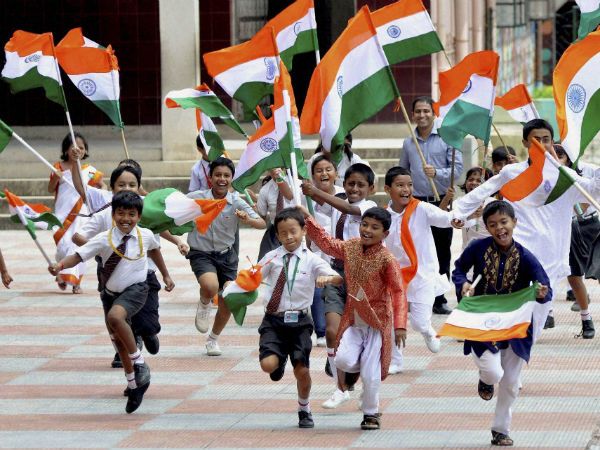 |
|
On 29 January a breathtaking Beating Retreat ceremony takes place, set against the Rashtrapati Bhavan when the Armed Forces bands play martial music and march forming intricate patterns. This is followed by a colourful display of flares and illumination of the Rashtrapati Bhavan and other buildings around.
|
|
|
|
|
|
-: Makar Sankranti
:-
|
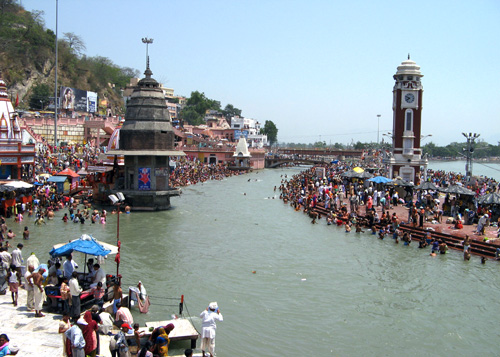 |
Makar Sankranti is celebrated due to the ‘ascent’ of the sun to the north (Uttarayana). It is the only Hindu festival which falls regularly on the 14th of January every year. In Maharashtra, Karnataka and Andhra Pradesh, it is celebrated as a day of goodwill and friendship. Sesame Ladoos and sugar drops are distributed which means that each and every one should be generous and kind to everyone.
|
|
Women wear new clothes, new glass bangles and hold get together to share sweets and gifts. A new bride is given ornaments made of sugar drops and her new relatives are invited to meet and welcome her at a Haldi Kumkum
celebration. In Gujarat and other western states on the day of
Makar Sankranti kite festival is celebrated.
|
|
|
|
|
|
-: Lohri :-
|
|
In the north particularly in Punjab, the day before Makar Sankranti is celebrated as
Lohri. Lohri is the time after which the biting cold of winter begins to taper off. On this day the children go from door to door and collect funds for the community bonfires which are lit in the evening. Lohri is more of a community festival, where the birth of a son or the first year of marriage is celebrated with great fun and frolic. People gather around the bonfires and offer sweets, crisp rice and popcorn to the flames. Songs are sung to the beat of vigorous claps and greetings are exchanged.
|
|
|
|
|
|
-: Pongal
:-
|
|
In Tamil Nadu and Andhra Pradesh, the festival of Makar Sankranti is celebrated as
Pongal. This festival is celebrated as a harvest festival for three days. The first day is celebrated as a family festival which is known as the Bhogi
Pongal. This festival is confined to the domestic festivities. Surya
Pongal, the second day, is dedicated to the sun (Surya) when Pongal or the rice cooked in milk and jaggery is offered by women to the sun. Friends greet one another by asking “It is”. This festival is followed by great rejoicing.
|
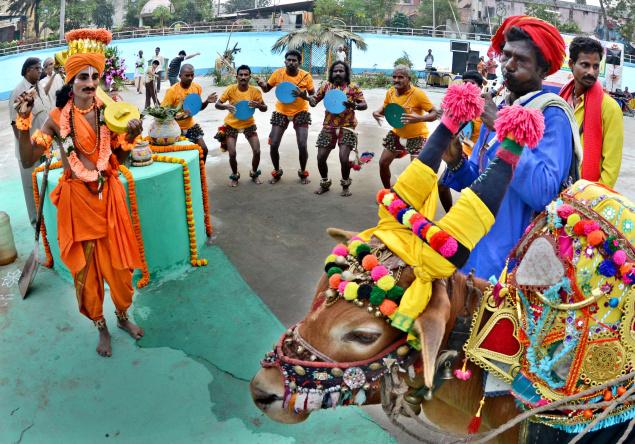 |
|
The greetings on this day normally follow the pattern of a question and an answer: “Did the milk boil” “Yes, it boiled”, referring to the sun. The third day is known as Mattu
Pongal, and is dedicated to the worship and veneration of cattle
(mattu). The pongal that has been offered to the local deities is given to the cattle to eat. The cattle are bathed and decorated. Coloured balls of the pongal are also made and left in the open for birds. In
Madurai, Tiruchirapalli and Tanjore, a kind of bullfight, called the “Jellikattu” is held. Bundles containing money are tied to the horns of ferocious bulls, and unarmed villagers try to wrest the bundles from them. At night, community meals are held with the ingredients provided by the freshly gathered harvest.
|
|
|
|
|
|
-:
National Kite Festival :-
|
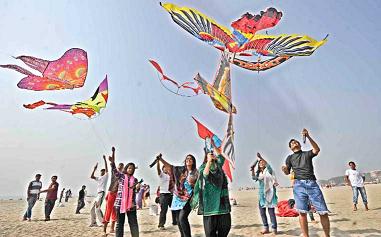 |
In Gujarat and other western states on the Makar Sankranti
there is change in the direction of winds and as such kite
festival is celebrated. On this day the entire city people
gather on their roof top and fly various colourful kites of
all patterns and dimensions attached to brightly coloured
strings and in a passionate bid to cut each other’s strings.
Young men vie with each other to win community kite flying
competitions. Various kite flying tournaments are held in
which cash, cups and shields are awarded as prizes to the
winners. Special kites with paper lamps fill the night sky
with myriad flickering lights. |
|
Besides
kite flying, Gujarati cuisine, handicrafts and folk arts are the
other attractions of the festival.
|
|
|
|
|
|
-:
Kerala Village Fair :-
|
|
The Kerala Village
Fair is held every year in the mid of January in the villages of
Kovalam, Kerala. This fair is organised for almost ten days.
During these days the traditional thatch houses are decorated
and various folk dances, music and festivities are the part of
this fair.
|
|
|
|
|
|
-: Float Festival :-
|
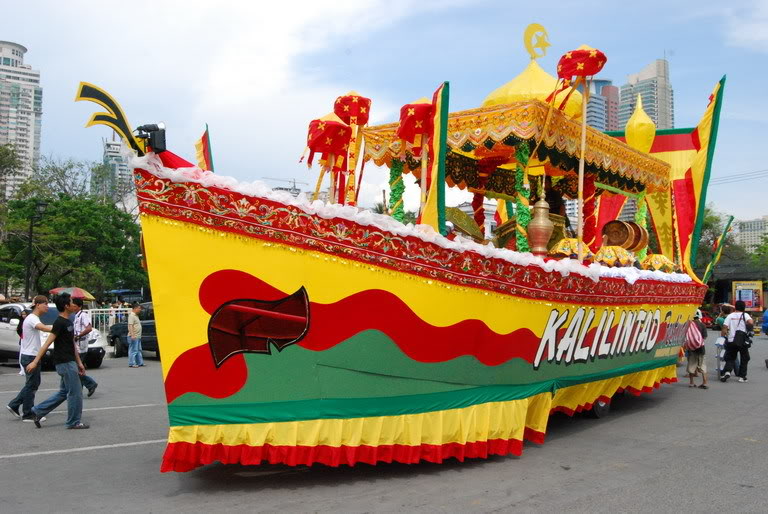 |
Float festival is celebrated in Madurai on the night of the full moon. The ornamented icons of the two deities, the god Sundaresa (incarnation of Shiva) and the goddess Meenakshi (incarnation of Parvati), with pearl crowns on their heads and riding on a golden bull are taken out in a splendid procession from the Meenakshi temple. The Gold Alaghar (incarnation of Vishnu) gives his sister Meenakshi in marriage to Sundaresa amidst great rejoicing. The devotees wore the clothes of yellow and red color and dance in the procession and spray coloured water on them. The icons are floated in the tank on a raft decked with flowers and flickering lamps.
|
|
|
|
|
|
-: Bikaner Festival / Camel Festival :-
|
|
The Bikaner festival or the Camel Festival is a colourful festival of the camels. This festival is celebrated in the month of January in
Bikaner. This festival starts with a magnificent procession of beautifully decorated camels. Several competitions are held, marked with typical Rajasthani
colour, joyous music and lilting rhythms and gay festivities.
|
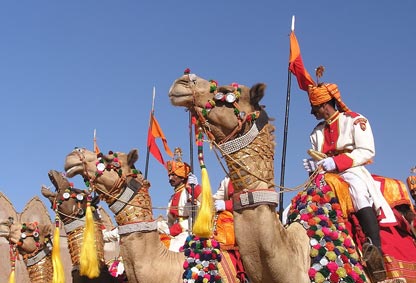 |
|
|
|
|
|
-:
Pattadakal Dance Festival
:-
|
|
The Pattadakal Dance Festival is celebrated every year in the
month of January in Pattadackal, Karnataka. Pattadackal was
the ancient capital of the Chalukyan Kings. This dance
festival is organised by the Karnataka government to celebrate
the temples of Pattadackal. The 'Nrityotsava' or the dance
festival draws various famous dancers from all over the world
and is accompanied by a crafts fair. |
|
|
|
|
|
-: Id–ul–Fitter
:-
|
 |
This festival celebrates the end of Ramzan, the Muslim month of fasting. It is an occasion of feasting and rejoicing. The faithful gather in mosques to pray and meet their friends and relatives and exchange greetings with each other. Prayers, family get–togethers and feasts are the major highlights of the celebrations. Idi or presents of money are given to the youngsters by the family elders, conveying their blessings. |
|
|
|
|
|
Back
|

